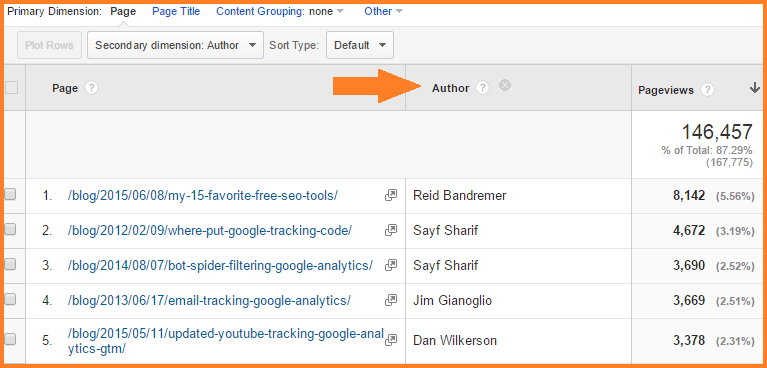Opening the Power of Second Measurement Analytics for Enhanced Information Insights and Decision-Making
In the realm of information analytics, main dimensions usually take the limelight, yet the real deepness of insights lies within the realm of second measurements. By utilizing the power of secondary measurement analytics, organizations can unveil surprise fads, reveal correlations, and extract more meaningful conclusions from their data.
Significance of Secondary Measurements
Checking out the relevance of secondary dimensions in analytics introduces the concealed layers of data understandings crucial for educated decision-making in various domains. Secondary measurements provide a deeper understanding of primary data by supplying extra context and viewpoints. By integrating second measurements into analytics, organizations can remove extra nuanced and comprehensive understandings from their datasets.
One trick importance of additional dimensions is their capability to section and categorize key information, permitting a more thorough evaluation of specific subsets within a dataset. This segmentation makes it possible for services to determine patterns, trends, and outliers that might not be noticeable when checking out the information all at once. Additional measurements assist in uncovering connections and dependencies between various variables, leading to even more precise projecting and predictive modeling - secondary dimension.
Furthermore, additional measurements play a critical function in enhancing information visualization and coverage. By adding second measurements to visualizations, such as charts or charts, experts can produce a lot more insightful and informative representations of information, assisting in better communication of searchings for to stakeholders. In general, the assimilation of second dimensions in analytics contributes in unlocking the full potential of information and driving evidence-based decision-making.
Trick Advantages of Making Use Of Second Dimensions
Utilizing additional dimensions in analytics offers organizations a strategic advantage by boosting the deepness and granularity of information insights. One essential advantage of incorporating additional dimensions is the ability to segment and filter information, allowing for an extra detailed evaluation of certain aspects within a dataset. This division makes it possible for organizations to obtain an extra nuanced understanding of their target market, efficiency metrics, and other critical information factors. By dissecting data utilizing secondary dimensions such as time, location, device type, or user demographics, companies can uncover patterns, fads, and connections that may or else continue to be hidden.
In addition, the usage of additional measurements improves the context in which key information is analyzed. It provides an extra thorough sight of the relationships in between various variables, enabling companies to make enlightened decisions based upon a much more holistic understanding of their information. In addition, secondary measurements facilitate the recognition of outliers, abnormalities, and locations for optimization, ultimately leading to a lot more efficient approaches and boosted outcomes. By leveraging additional dimensions in analytics, companies can harness the full potential of their information to drive better decision-making and attain their website link business objectives.
Advanced Information Analysis Strategies
A deep study advanced information analysis methods discloses innovative methods for removing valuable understandings from complex datasets. One such strategy is artificial intelligence, where algorithms are utilized to recognize patterns within data, forecast outcomes, and make data-driven choices. This approach enables the automation of logical model building, allowing the handling of huge volumes of information at a much faster pace than standard techniques.
An additional sophisticated strategy is predictive analytics, which makes use of analytical algorithms and artificial intelligence methods to forecast future results based upon historic information. By analyzing fads and patterns, organizations can expect customer habits, market trends, and possible risks, equipping them to make positive choices.
Moreover, message mining and belief evaluation are useful strategies for extracting understandings from disorganized data resources such as social networks comments, consumer testimonials, and survey responses. By examining text information, organizations can recognize client point of views, identify emerging patterns, and improve their services or products based upon feedback.
Enhancing Decision-Making Through Additional Dimensions

Enhancing decision-making via additional measurements makes it possible for services to make even more informed and targeted critical options. For instance, by segmenting client information based upon additional dimensions like purchasing background or engagement levels, firms can tailor their marketing strategies to particular target market sectors, bring about improved conversion prices and customer contentment. Second measurements can help recognize connections and connections in between different variables, making it possible for companies to make data-driven choices that drive development and earnings.
Applying Second Measurement Analytics
When including additional dimensions in analytics, organizations can open much deeper insights that drive critical decision-making and improve general efficiency. This involves recognizing the details questions the company looks for to answer and the data points required to address them.

Moreover, companies should leverage progressed analytics tools and innovations to enhance the procedure of including secondary measurements. These go to this site tools can automate data handling, analysis, and visualization, allowing organizations to concentrate on interpreting insights instead of manual data control.
Final Thought
To conclude, secondary measurement analytics play an essential role in boosting data understandings and decision-making processes. By making use of sophisticated data analysis more helpful hints strategies and carrying out second measurements successfully, companies can unlock the power of their data to drive calculated business decisions. The key advantages of utilizing secondary dimensions can not be overstated, as they give a much deeper understanding of data trends and partnerships. It is important for companies to utilize second dimension analytics to stay competitive in today's data-driven landscape.
In the realm of information analytics, key measurements commonly take the spotlight, yet the real depth of understandings lies within the realm of secondary dimensions.Making use of additional measurements in analytics uses organizations a critical advantage by augmenting the depth and granularity of information insights. By leveraging second dimensions in analytics, companies can harness the complete potential of their data to drive far better decision-making and attain their service goals.
Implementing data validation processes and routine audits can aid keep data high quality and integrity.
By using innovative data analysis methods and executing secondary measurements successfully, organizations can open the power of their data to drive critical company choices.